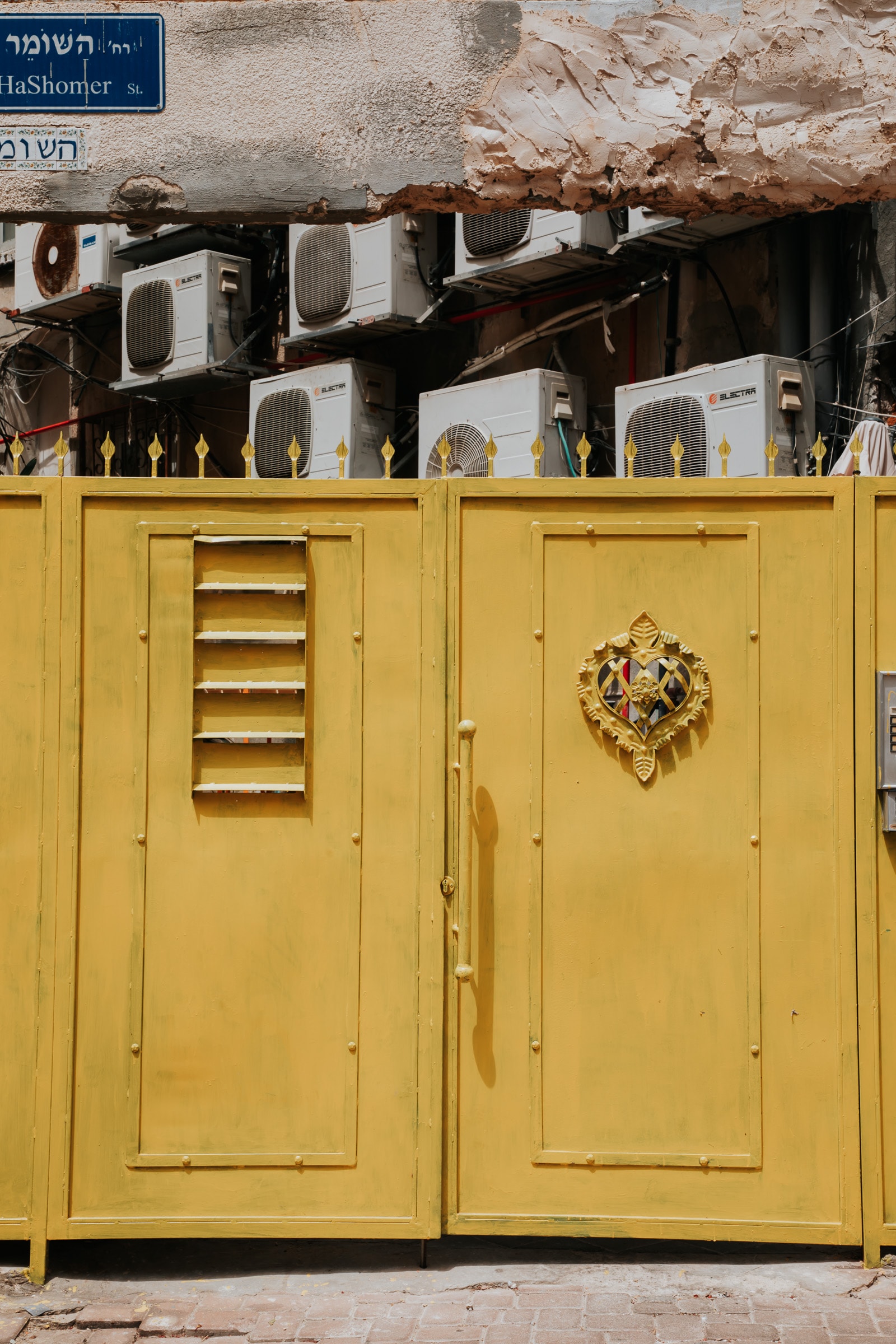
Subscribe to my Newsletter
Get the latest travel inspiration straight to your inbox!
By submitting you agree to your data being stored for newsletter purposes. Read more.

Get the latest travel inspiration straight to your inbox!
By submitting you agree to your data being stored for newsletter purposes. Read more.
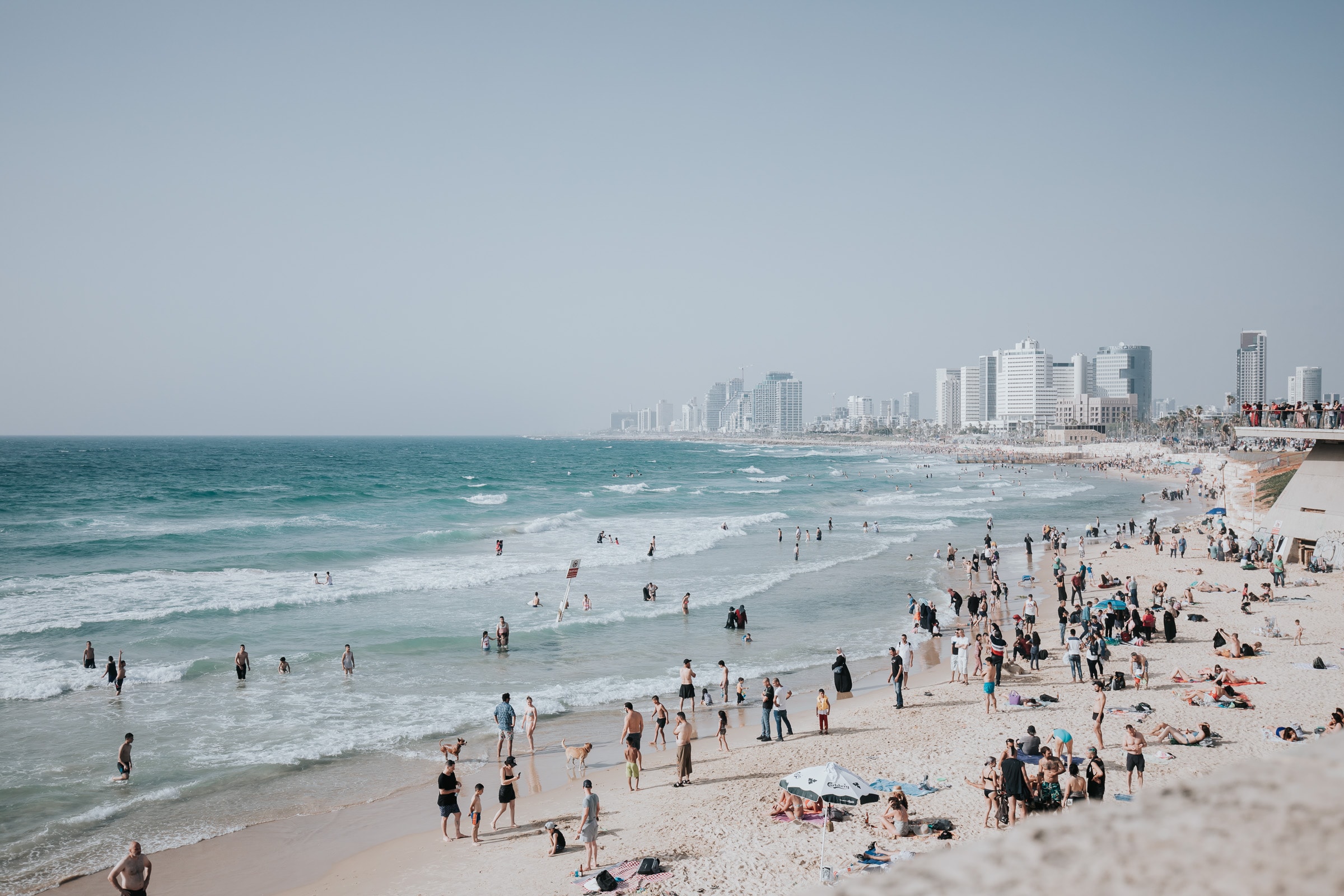
Tel Aviv is bursting with energy! This city is young, dynamic and sometimes wild! In this article you will find my very personal tips for vibrant Tel Aviv!
In this ultimate article, I reveal my highlights in Tel Aviv: the best locations, tips and sights in Tel Aviv! And what you have to see in the party capital of Israel. Plus practical tips, because you’ll need them: Tel Aviv is an expensive place! Every budget tip is worth its weight in gold!
Tip: Plan ahead and check the best hotel deals in Tel Aviv*
Can I find the right words to describe the energy of Tel Aviv? Tel Aviv is bursting with life. No wonder Israel’s party stronghold is a popular travel destination. In addition to sightseeing, good food and a lively club scene, you can relax on the long beaches here, including the most beautiful sunshine.
Welcome to my travel blog
Hey, I’m Tatiana and I’m the blogger behind The Happy Jetlagger. Since 2014, I’ve been sharing my personal travel stories on this blog. I don’t have a big team behind me, so I’m pretty much a one-person show: I’ve researched and tested all recommendations myself.

The beaches in Tel Aviv blew me away: I didn’t expect such fine sandy beaches! Even in spring, the temperatures were perfect for swimming or at least sunbathing. And the beach life in Tel Aviv is unique. As if the whole life of Tel Avivis takes place on the city’s beaches. Beautiful people everywhere, active, sporty, cheerful – you’d think you were in Miami Beach. Each individual beach attracts its own audience, from families to LGBT to water sports enthusiasts.
At Gordon Beach there is even a 50-meter saltwater pool next to the beach, where you can swim a few lengths for a fee if the sea is too wild for you.
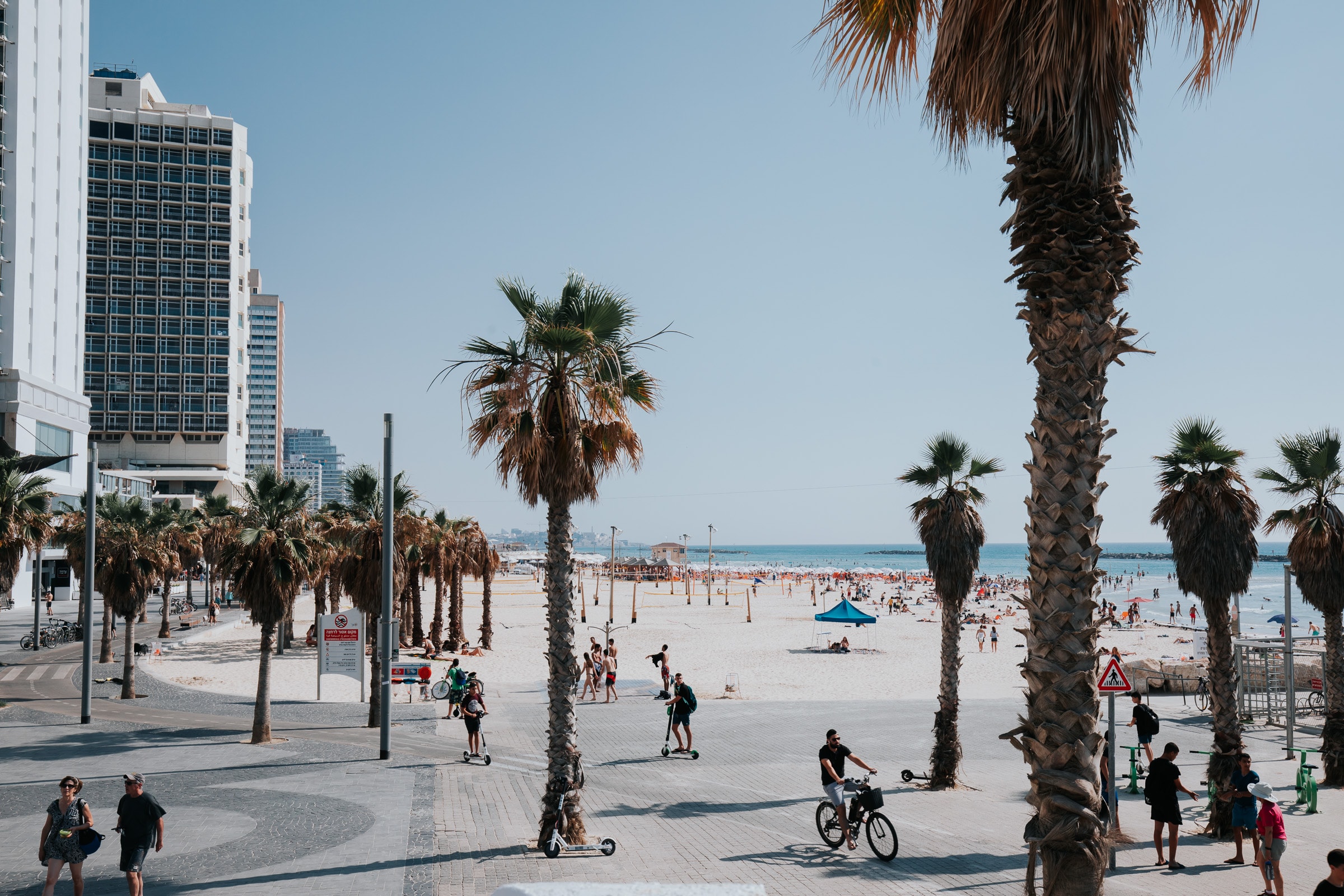
The central beaches are Frishman Beach (the one with the brightly painted lifeguard bungalow) and Bograshov Beach: it’s busy here from morning until late at night.



There are always great beach bars on every beach where you can spend hours simply enjoying the beach life with a cocktail. Or you can come towards evening and watch the sun as it slowly sets into the sea.
Ad / *affiliate links
+++ Exclusive +++
Get 5% off on any GetYourGuide tour
Code: THEHAPPYJETLAGGER5
Goldman’s Court (Alma Beach) Perfect for sunset! It’s best to reserve one of the stools on the balustrade facing the promenade: there’s no better view of the sunset!
Gazoz Once you’ve sat in the almost-as-cool deckchairs in the sand and have your first drink in your hand, you won’t be leaving here in a hurry: it’s better to stop here at the end of the day!

Jaffa (Yafo in Hebrew), a coastal town over 4000 years old, is located south of Tel Aviv. You should allow at least half a day for Jaffa! Here you will find the small stone alleyways and not forgetting the famous flea market. The small boutiques in Jaffa are a wonderful place to browse, the warm sea air wafts through the streets and in general I found the atmosphere here much more relaxed than in busy Tel Aviv. While Tel Aviv is a bit like Miami, Jaffa is Ibiza in hippie style: the clocks seem to tick more slowly here – and for me, the romantic alleyways in the old town are among the absolute must-see sights in Tel Aviv!






It’s best to start your tour at the Jaffa flea market and then head towards St. Peter’s Church. On the way, you have the best view of Tel Aviv and its endless beaches from the hill! Don’t miss it!

Then let yourself drift from Kikar Kedumin Square through the narrow streets of the old town down to Jaffa Port, Jaffa’s old harbor. There are many restaurants and cafés on the promenade, perfect for a short break.

Tip: The archaeological excavation in the middle of a store in the old town of Jaffa at Adina Plastelina, lunch at Abouelafia (grill restaurant, but also bakery) or the hyped Dr. Shakshuka.
Markets are always a good tip in foreign cities, especially for trying out culinary delights. Especially in Tel Aviv, where there is so much to discover in terms of food thanks to the different cultural influences!

At the Carmel Market you will find everything your heart desires, from underpants to fruit and the hippest coffee stalls. And as usual in Israel, the hustle and bustle is lively and spirited! Here you can try dishes from all over the world at one of the many street food beaches– or simply eat some falafel and hummus.
Insta tip: Colorful umbrellas are set up at the entrance to the Carmel Market on Magen David Square – a beautiful photo location!

You can find even more tips for Israel here
See and be seen could be the motto on Rothschild Boulevard in the middle of the city center. A large boulevard with space for pedestrians, cyclists and scooters. There are always little stalls here that once sold gazoz (flavored soda water) and are now mostly home to hip little cafés. Unfortunately, the buildings along the boulevard are suffering from the ravages of time, as is often the case in the center of Tel Aviv: I was surprised at how neglected many of the neighborhoods appear.

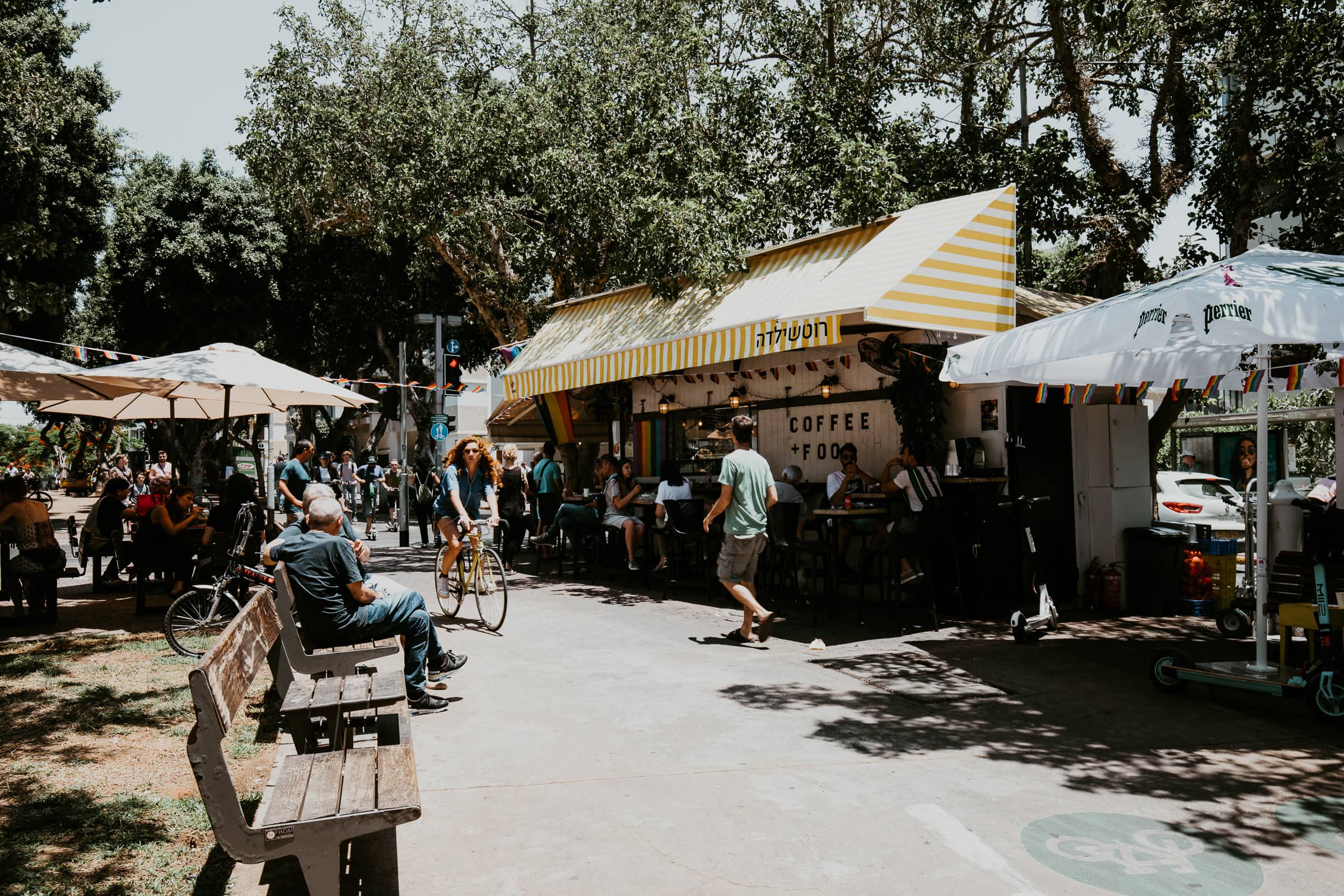

One of the best locations to experience Bauhaus architecture in Tel Aviv is Dizengoff Square. When the glistening sunlight typical of Tel Aviv falls on the snow-white façades, it is impressive.

Dizengoff Square with its traffic circle is one of the central points of the city. Tel Aviv’s first shopping center is located along Dizengoff Street – you can forget about it, it’s just like everywhere else. Instead, the rest of the street is lined with small boutiques and inviting cafés.
Tips around the Dizengoff Square: Yashka (stylish snack bar, I could have laid down in the shawarma! Attention: huge portions!), Bauhaus Center Tel Aviv, Ben Gurion House



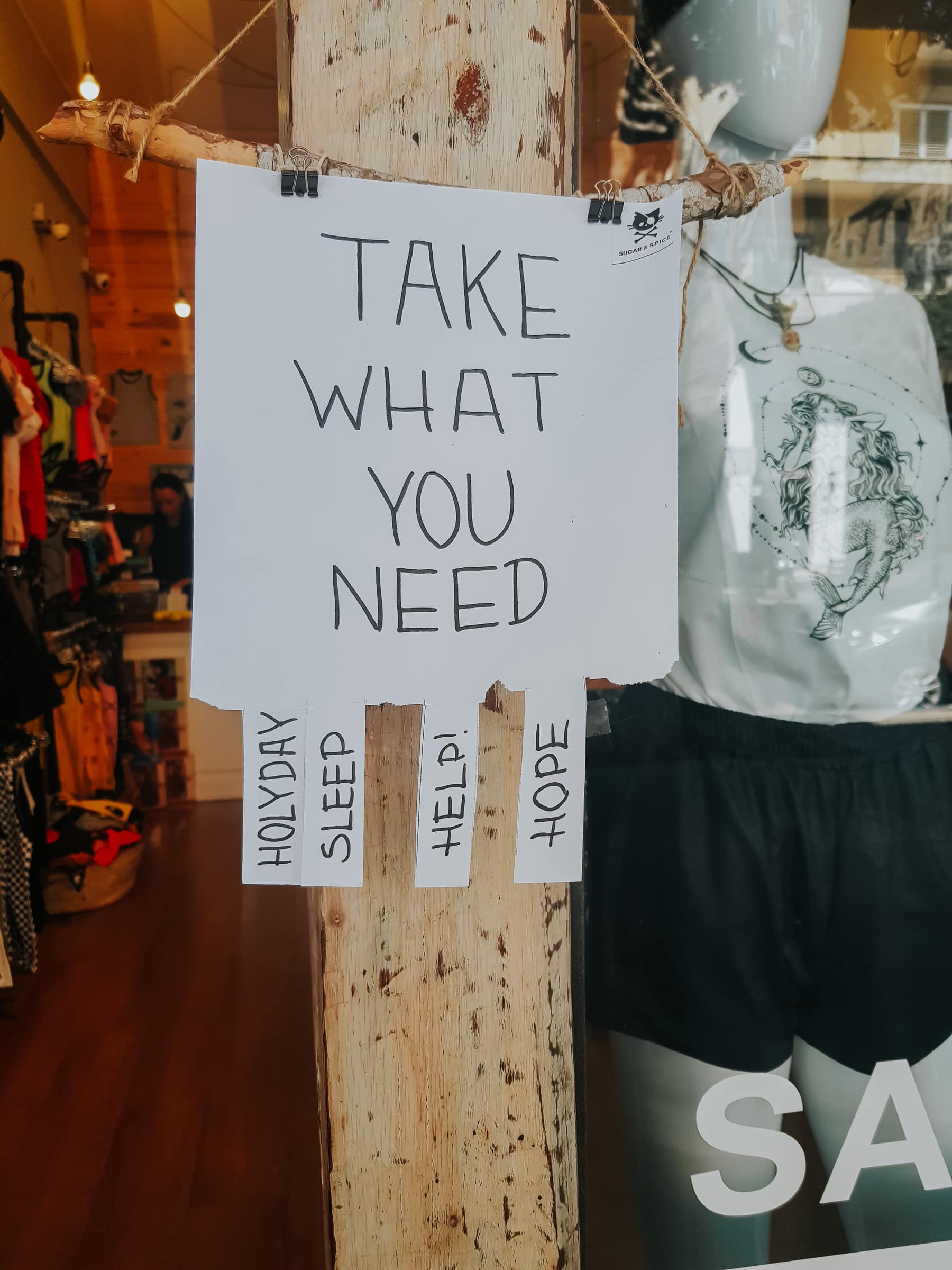
Not far away is the house of Israel’s first Prime Minister David Ben-Gurion, the Ben-Gurion House. He proclaimed Israel’s independence in 1948 and is still revered in the country today. His home near Dizengoff Street can be visited and is one of the lesser-known sights in Tel Aviv. Nevertheless, I found it very interesting, also to learn something about the history of Israel. The strikingly modest furnishings are still in their original condition. Very informative. And: Admission is free!

Tel Aviv has the highest density of Bauhaus buildings in the world. As many of these buildings are white, this group of buildings is also known as the White City. You can get an overview of Bauhaus in Tel Aviv at the Bauhaus Center Tel Aviv.
Unfortunately, many of the buildings are not quite as well preserved as they once were, but the Bauhaus influences can be seen quite clearly in certain corners, such as the impressive Dizengoff Square in the center of Tel Aviv.
➜ Architectural tour of Tel Aviv with many Bauhaus buildings*

Tel Aviv is actually a very young city. At the beginning of the 20th century, Tel Aviv was just a tiny suburb of the historic city of Jaffa. Curious: today it works the other way around! Following persecution by the National Socialists, many Jews of German descent came to Tel Aviv in the 1930s and 1940s, bringing with them the modern architectural trends of the time.

The Sarona Market is completely different, but still worth a visit. Situated a little further away, the Sarona Market is the finer counter-program to the Carmel Market. As a newly opened indoor market, it lacks a little of the patina and bustling market life, but you will find all kinds of culinary delights! They don’t shy away from experimental offerings either: there is even a stand with Bavarian street food. Freely interpreted, though, because Bavarian hot dogs? Anyway, somehow this is also typical of Tel Aviv: Tel Avivis seem to have little fear of trying out new things!
Tip: Shakshuka at Benedict! (Benedict is a small chain of breakfast restaurants, some of which are open around the clock and serve breakfast throughout the day).




While many parts of Tel Aviv are already modern and hip, Florentin tops them all. This district is probably the most alternative in Tel Aviv. Colorful street art adorns the walls, the cafés are full of digital nomads sitting behind their laptops. Florentin seems like a free island in an already detached Tel Aviv.
Tip: Levinsky spice market (neighborhood market with many small stalls)
By the way: Florentin is also a nice district to stay in! The atmosphere is relaxed and you can always find some nice accommodation here!
➜ Find places to stay in Florentin*

It’s hard to escape the dynamism of Tel Aviv. Sometimes it seems as if everyone is out of control. Determined to enjoy life with all its ups and downs as intensively as possible. The mild climate means that people spend a lot of time outdoors – and Israelis are sociable anyway. As a matter of course, I was invited to private Shabbat dinners, yacht parties and other events – without much fanfare. Israelis value the community, and it’s easy to make friends. If you don’t have to worry about high walls and deep graves elsewhere in Israel, you are always welcome as a visitor in Israel. (Provided you get through the entry procedure unscathed; I was hit so badly on both trips to Israel that Israel will probably not see me again any time soon).
Many Israelis originally come from other countries. Tel Aviv attracts young people from all over the world, and if you can prove your Jewish faith, the path to Israeli citizenship is short. I was warmly welcomed everywhere, which made up for the lack of service culture in many places, and I was very touched on more than one occasion.

Indulgence is a top priority, so it is not surprising that Tel Aviv has an almost endless gastronomic offering. There is also no fear of alternative concepts: Bicicletta, for example, is a club/café/restaurant/plant store in the Nachalat Benjamin district.
Tip: Go out for a good meal in the evening, turn night into day at Kuli Alma, an alternative club, and hang out on the beach the next day: Enjoy life in Tel Aviv to the full!


In Israel, you pay in Israeli shekels. But you can also pay by credit card in many places, which is rarely a problem in technologically advanced Israel.
I always use my DKB credit card when I travel:
➜ Apply for a DKB credit card here*
But: Tel Aviv, like the whole of Israel, is very, very expensive! The cost of living is also very high for Israelis, with low wages. I have no idea how the largely young population will cope with this. As a visitor, you simply have to go through it. You can spend a lot of money on food in particular, as many goods are imported. Which is a shame, because there is so much to discover in Tel Aviv, especially when it comes to food!
With a German passport you do not need a visa for Israel. There are direct flights to Tel Aviv from many German airports, e.g. Easyjet and El Al fly directly from Berlin-Schönefeld. However, the journey itself can be adventurous, depending on which airline you choose. El Al, for example, has very strict safety regulations. Unfortunately, I didn’t have such good experiences and could write half a novel about my arrival and entry. However, as complications on arrival/departure also depend heavily on individual factors, I may prefer to go into this topic in more detail in another blog post.
However, on my two trips to Israel, I had the strong feeling that if you have a southern European/slightly Arab appearance and a German passport, it is easier to fall into a group of people who are subject to more intensive checks. I personally found the security checks very stressful and degrading. This is currently preventing me from traveling to Israel again. However, other travelers from Germany had few to no problems with the security check.
Hostels such as the Abraham Hostel* or The Spot Hostel* are popular with budget travelers. The Abraham Hostel also has a rooftop bar, which is not only popular with guests, and offers many tours of Tel Aviv and the whole of Israel. However, I didn’t find the location particularly appealing.
If you have a higher budget, you will be hard pressed to find designer accommodation in Tel Aviv. The Brown Hotels, of which there are a total of nine spread across the city, are particularly individually furnished: Brown TLV, Brown Beach House, Dave Gordon, Dave Levinsky, Poli House, Lighthouse, Theodor, Town House and Hôtel Bobo.
I ended up at Jojo TLV*, a small boutique hotel located in an old factory floor. Absolutely inconspicuous from the outside, the operators have created an inspiring place here. Due to its small size (there are only a few rooms), the Jojo TLV is more of a stylish shared flat than a hotel. In the shared lounge/kitchen there is the best coffee and nice conversation for free. Very communicative – and I found the close location to Jaffa and the beach perfect. The price-performance ratio is absolutely right.
➜ Prices and availability at Jojo TLV*



The military/police presence in Tel Aviv is quite high, but not as massive as in Jerusalem, where I was before. Nevertheless, conscripts in full uniform with machine guns are part of everyday life. Irritating, but overall I found the atmosphere in Tel Aviv more relaxed than in Jerusalem. I never felt unsafe, even when I was out alone in the evening. Due to the constantly changing political situation, I recommend that you take another look at the information page of the Federal Foreign Office on Israel, which is constantly updated.
The actual center of Tel Aviv is not as big as you might think: You can get to many places on foot. I have explored most of Tel Aviv on foot myself.
For example, I always wanted to rent one of the many rental bikes (there are several providers in Tel Aviv), but in the end I mainly got around on foot. Scooters are also very popular in Tel Aviv (and very fast – watch out!).
There is also a well-developed bus network and, more recently, a streetcar line. However, I didn’t try any of this, as I was in Tel Aviv on one of the highest Jewish holidays (Shavuot), and there is no public transportation at all! This also applies to every Shabbat/Saturday! Cabs also run less on these days.
Instead of Uber, Gett is used in Tel Aviv, unfortunately the app is mostly in Hebrew and it is not always possible to pay by app. On one trip I had to pay the driver at the end, who then promptly and loudly demanded double. It was only thanks to my spirited Israeli companion, who showed the driver just as loudly where the frog’s curls were, that we got away again: People like to argue loudly and aggressively in traffic, and Israel is a service desert in my eyes anyway. So keep your eyes open when traveling with Gett.
Israel is a small country, and Tel Aviv is right in the middle. From Tel Aviv you can book day trips or tours lasting several days, or travel on your own. So it’s worth taking a little more time and discovering more of Israel!
The state-owned bus company Egged will take you to every corner of the country, including Jerusalem, for little money.
I spent most of my time in Israel traveling by rental car. This gave me more flexibility, especially for the route to Masada and the Dead Sea, and I was able to return the rental car directly to the airport for my return flight. Despite the reckless driving skills of some Israelis outside Tel Aviv, driving in Israel is relatively relaxed and the roads are well developed. Like everything else, however, rental cars in Israel are quite expensive, so it’s worth comparing prices early on!
➜ Find the best rental car deal here*
I really recommend a trip to Jerusalem! It’s a completely different world to Tel Aviv and hard to digest, but if you’re ever in Israel, you shouldn’t miss this place. From Tel Aviv you can easily travel to Jerusalem on your own, there are good train and bus connections. Or you can join a guided tour that travels to Jerusalem in the morning and back again in the afternoon.
➜ Book a day tour from Tel Aviv to Jerusalem here*
You can also find out more about Jerusalem in my blog articles:
Jerusalem: All the most important sights & a great travel guide!
City of David: An archaeological excavation with depth
Jerusalem: Thoughts on a difficult city
The Masada fortress is also well worth a visit!
Masada: Sunrise over the Dead Sea


